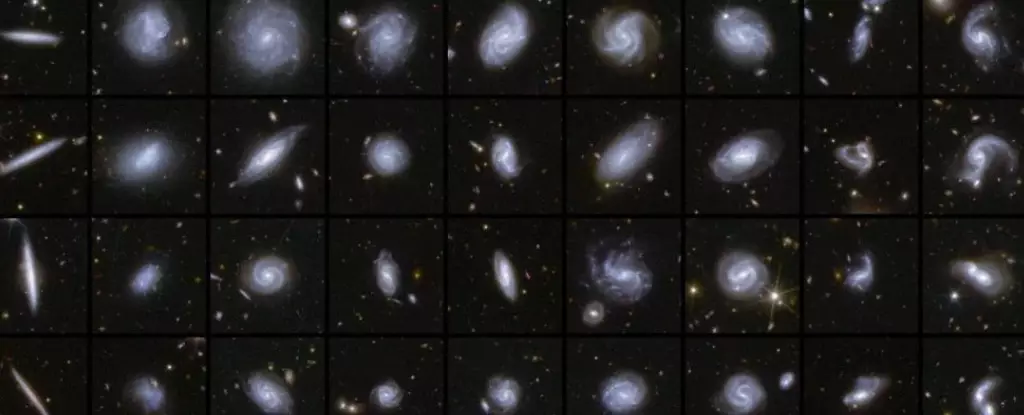The European Space Agency’s (ESA) Euclid Space Telescope is poised to change the way we understand the universe. Following its launch in July 2023, the telescope has captivated astronomers and stargazers alike by presenting breathtaking initial images of celestial phenomena such as the Perseus Cluster and the iconic Horsehead Nebula. However, the momentous revelations don’t stop there; Euclid has recently showcased its first images of its meticulously chosen “Deep Fields,” regions of space it will observe repeatedly to unravel the complexities of our universe’s structure.
Euclid is equipped with an impressive 600 MB camera designed to capture the nuances of the cosmos with exceptional clarity. Yet, its grand mission extends beyond mere observation; it aims to probe the historical expansion of the universe. To achieve this ambitious objective, the telescope will stitch together thousands of images into vast maps that illustrate the large-scale cosmic framework, observing billions of galaxies situated up to 10 billion light-years away. As it embarks on this transformative journey, covering more than a third of the night sky, it promises to enhance our understanding of cosmic evolution dramatically.
A Treasure Trove of Data Awaits
The recent data release from the ESA marks an enormous leap forward in astronomical research. This first glimpse into Euclid’s survey underscores its value as a “discovery machine,” as noted by ESA’s Director of Science, Prof. Carole Mundell. The unveiling of these deep field observations holds the potential for discoveries akin to those made by its predecessor, the Hubble Space Telescope. Early findings have already revealed astonishing phenomena such as gravitational lenses, which shed light on the distribution of dark matter, and diverse galaxy shapes, hinting at the evolutionary narratives etched into the cosmos.
Euclid’s two state-of-the-art instruments—the Visible Imaging Channel (VIS) and the Near-Infrared Spectrometer and Photometer (NISP)—collaborate effectively to capture the ever-elusive distances and masses of galaxies. This capability is essential for mapping the “cosmic web,” the underlying scaffolding of dark and regular matter from which galaxies and clusters emerge. With the mission expected to last until 2030, the telescope plans to re-scan these deep fields multiple times, paving the way for unprecedented insights into the interplay between dark matter and cosmic structure.
The Excitement of Early Findings
So far, Euclid has managed to identify an astonishing 26 million galaxies, a mere drop in the ocean when considering the grand total it will eventually catalog. This nascent data merely reflects 0.4 percent of what Euclid is capable of achieving. By the time its mission concludes, it aims to compile a comprehensive database of galaxy morphologies, possibly an order of magnitude larger than any prior observations. This repository will propel us into new realms of understanding regarding the genesis and transformation of galaxies.
Clotilde Laigle, a prominent scientist within the Euclid Consortium, describes this initial data release as a “unique first glance” into the sprawling organization of galaxies. The potential implications extend from the microcosmic realm of galaxy formation to the macrocosmic inquiries of fundamental cosmology. Indeed, Euclid offers a generative wealth of knowledge that will ripple through the scientific community for years to come.
The AI Revolution in Astronomy
Another striking feature of the Euclid mission is its integration of artificial intelligence and citizen science. The initial discovery of nearly 500 strong gravitational lenses underscores the synergistic power of humans and machines in unveiling the secrets of the universe. The lenses were largely unknown prior to Euclid’s launch and represent a frontier of exploration that combines high-tech analytical capabilities with grassroots participation. Such collaborative efforts reflect a promising model for future astronomy projects, cementing Euclid’s significance not just as a telescope but as a multi-faceted discovery platform.
Like the ESA’s Gaia mission, which has mapped the Milky Way with extraordinary precision, Euclid is set to provide foundational knowledge of the cosmic web and dark matter phenomena. Just as Gaia has woven itself into a multitude of research avenues, one can expect Euclid’s data to serve as a cornerstone for understanding some of the most pressing mysteries of our universe.
Future Implications for Cosmology
In a realm where dark matter and dark energy remain enigmatic concepts, Euclid emerges as a beacon of hope for astronomers. This telescope holds immense promise in bridging the knowledge gaps that have persisted for decades. As it gathers extensive observational data, scientists will have unprecedented opportunities to decipher the complexities of cosmic evolution and the invisible forces steering it. By meticulously cataloging galaxy formation and transformation, Euclid paves the way for mankind’s deeper comprehension of the universe—a journey that, although fraught with challenges, is poised to reshape our understanding of reality itself.
As more discoveries unfold, Euclid will undoubtedly captivate not just the scientific community but also the imagination of humanity as a whole, beckoning us to look deeper and consider our place in the cosmos.

